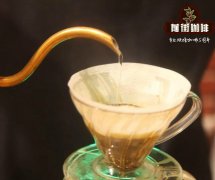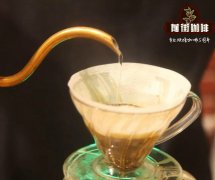How does the deep-baked coffee taste good? The unused flavor of coffee produced by different baking time

How does the deep-baked coffee taste good?
Medium-roasted beans, suitable for extraction by hand, French press, siphon pot and dripping coffee machine
Deep-baked beans, suitable for mocha pot, Italian coffee maker, Philharmonic pressure extraction.
The baking time of beans will affect the appearance and taste. The simplest way to judge is that the longer the beans are roasted, the lighter the sour taste and the less caffeine. List the coffee flavor produced by different baking time for your reference.
Very shallow baking (light roast): has a strong smell of grass, lack of aroma, rarely used for tasting.
Light roasting (cinnamon roast): high acidity, slightly fragrant, often used to make American coffee.
Medium roasting (medium roast): sour and bitter taste, moderate aroma, retain the original flavor of coffee beans, often used to make American coffee or mixed coffee.
Medium and deep baking (high roast): the taste is rich, sour and bitter balanced and slightly sweet, with good aroma and flavor.
Urban roasting (city roast): lower acidity than medium and deep roasting, perfect display of coffee flavor, is the standard roasting degree, the most popular among the general public.
Deep roasting (full city roast): bitterness is stronger than sour taste, the aftertaste is sweet, full of aroma, mostly used to make iced coffee or black coffee.
French baking (French roast): bitter, strong, not sour, with smoky aroma.
Italian roast: beans are glossy, bitter and scorched, and are mainly used to make espresso.
The deep-roasted coffee beans appear dark brown, like chocolate, and sometimes almost black. There will be a glossy finish on their surface, which can usually be seen in the cup when brewing.
The original flavor of coffee is lost in the process of baking, and it generally tastes bitter, smoky, and even scorched. The caffeine of deep-baked beans is also greatly reduced.
To reach deep baking, coffee beans reach 240 degrees Celsius inside-probably at a second or later stage of bursting. But they are rarely baked to more than 250 degrees Celsius. In that case, the beans will become very thin, and its taste will taste like tar and charcoal.
There are many kinds of deep-baked beans, so it may not be easy to choose deep-baked beans. Some of the more popular types are: French, Italian, Italian, European, New Orleans and Spanish. Many deeply roasted beans are used in espresso.
Important Notice :
前街咖啡 FrontStreet Coffee has moved to new addredd:
FrontStreet Coffee Address: 315,Donghua East Road,GuangZhou
Tel:020 38364473
- Prev

Espresso, latte, cappuccino, caramel macchiato
Espresso, latte, cappuccino, caramel macchiato, etc. Looking at the coffee in front of you, you may have a very intuitive idea that they are all coffee with milk, which may be the difference between them and individual coffee! However, the editor wants to tell you that it is not all that the difference between espresso and individual coffee is conscious coffee.
- Next

How to choose the hand pot that suits you? It is very important to see [the shape of the spout] clearly
Professional coffee knowledge exchange more coffee bean information Please follow the coffee workshop (Wechat official account cafe_style) Coffee lovers who like hand brewing know how important a hand brewing pot is. With the progress of the times, through the research and innovation of various manufacturers and many baristas, hand pots have developed many types: they have different materials and shapes.
Related
- Beginners will see the "Coffee pull flower" guide!
- What is the difference between ice blog purified milk and ordinary milk coffee?
- Why is the Philippines the largest producer of crops in Liberia?
- For coffee extraction, should the fine powder be retained?
- How does extracted espresso fill pressed powder? How much strength does it take to press the powder?
- How to make jasmine cold extract coffee? Is the jasmine + latte good?
- Will this little toy really make the coffee taste better? How does Lily Drip affect coffee extraction?
- Will the action of slapping the filter cup also affect coffee extraction?
- What's the difference between powder-to-water ratio and powder-to-liquid ratio?
- What is the Ethiopian local species? What does it have to do with Heirloom native species?

